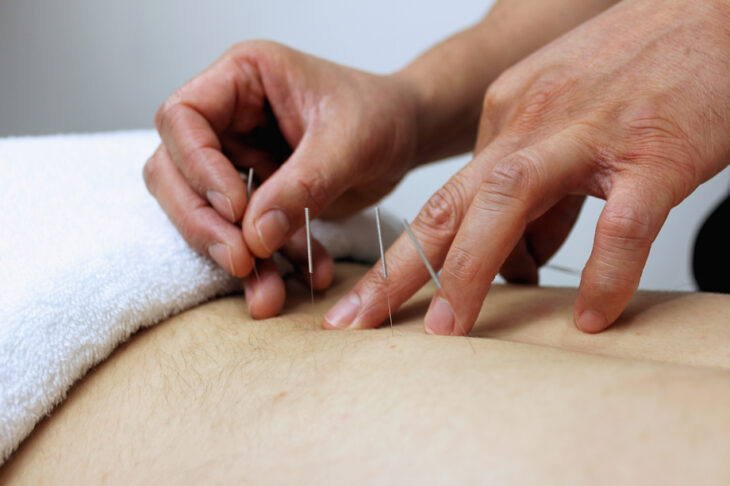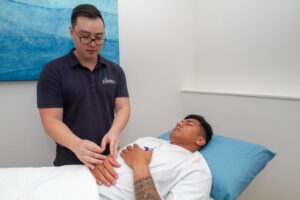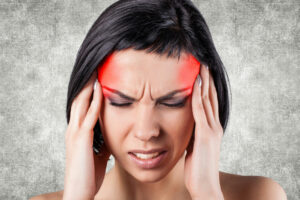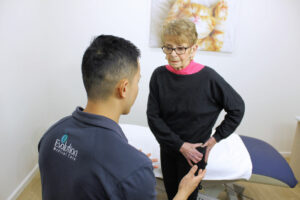Quick Summary
Acupuncture and Dry Needling both involve the insertion of fine needles, but their applications and goals differ significantly. Acupuncture is a well-established therapy within Traditional Chinese Medicine (TCM), designed to support overall health by stimulating specific points on the body. It is commonly used for pain relief, stress management, digestive health, as well as men & women’s health concerns.
Dry Needling, on the other hand, is a Western musculoskeletal technique that targets muscle knots (myofascial trigger points) to relieve localised pain and improve movement. It is widely used in physiotherapy and rehabilitation for sports injuries, tension aches and pains, and postural strain.
Dry Needling is also actually a component of Acupuncture, with Acupuncturists having used similar techniques for centuries under Trigger Point Acupuncture. Acupuncture, however, offers a broader, holistic approach, while Dry Needling is focused solely on muscle release.
Choosing between the two depends on your health goals. If you seek comprehensive care for long-term wellness, Acupuncture is the better choice. If you need targeted muscle relief for a specific injury, Dry Needling would be beneficial. Since Acupuncturists are trained in both techniques, at our clinic, they can provide a more integrated and regulated treatment approach.
Introduction
When it comes to evidence-based care for pain and recovery, Dry Needling and Acupuncture are often compared—but what truly sets them apart?
While both techniques involve the insertion of fine needles into the body, their underlying philosophies, techniques, and intended outcomes are vastly different.
Acupuncture is a centuries old practice within Traditional Chinese Medicine (TCM) that supports the body’s natural healing. It is a holistic approach to health commonly used to manage a wide range of health concerns, including aches and pains, hormonal imbalances, reproductive health, mental health and metabolic issues.
Dry Needling, on the other hand, is a much more modern technique developed within Western medicine. It primarily targets myofascial trigger points—knots or tight bands of muscle—to relieve localised pain and improve movement. Unlike Acupuncture, Dry Needling is symptom-focused, aiming to provide immediate relief rather than always addressing underlying health issues.
Understanding the differences between these two approaches is crucial for making an informed decision about which treatment best suits your needs. In this article, we will explore the key distinctions between Acupuncture and Dry Needling, helping you determine the most suitable option for your health and wellness goals.
What is Acupuncture & How it works?
Acupuncture involves the precise placement of fine needles at specific points on the body to stimulate the body’s natural responses. By activating the nervous system, it can help regulate pain signals, improve circulation, regulate hormones, and support the body’s innate healing processes. Research has shown that Acupuncture can influence the release of neurotransmitters such as endorphins and serotonin, which play a key role in pain relief, mood regulation, and overall well-being.
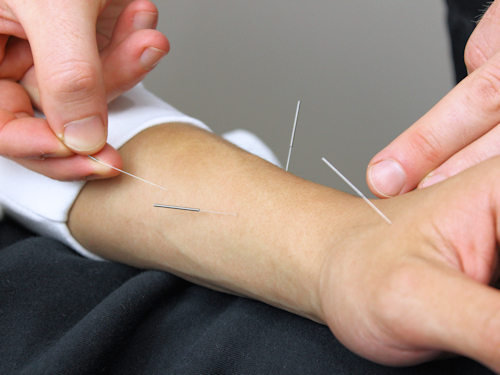
Conditions Acupuncture is Commonly Used For
Acupuncture is widely recognised for its ability to support a range of health concerns, including:
- Aches and pains such as back pain, neck pain, headaches, and migraines as well as other pain-related issues
- Pregnancy support, labour preparation and fertility support for both males and females
- Hormonal imbalances such as menopause and peri-menopause
- Mental health such as stress and anxiety, depression, insomnia, and addictions
- Metabolic issues such as digestion problems, diabetes, weight management and skin conditions like eczema, acne, and psoriasis
- Respiratory complaints such as asthma, bronchitis, pneumonia, dry lingering coughs, and sinusitis
As a holistic therapy, Acupuncture is often used alongside other natural treatments, including Cupping Therapy, Herbal Medicine, and lifestyle modifications, to enhance overall well-being.
What is Dry Needling & How it works?
Dry Needling involves inserting fine, sterile needles directly into areas of tight or dysfunctional muscle tissue. The goal is to stimulate a twitch response in the muscle, which helps release tension. This process can lead to reduced pain, improved mobility, and faster recovery from injuries.
The technique is often used by physiotherapists, chiropractors, and other manual therapists as part of a broader rehabilitation plan. Unlike Acupuncture, Dry Needling is typically applied to specific muscular pain points often with a rapid continual in-and-out technique or deep tissue stimulation to release tension, rather than a full-body approach to health.

Conditions Dry Needling is Commonly Used For
Dry Needling is primarily used to manage muscle and joint related aches and pains. Common applications include:
- Sports injuries such as muscle strains, tendonitis, and recovery from overuse injuries.
- Pain relief and improved mobility which helps release tight muscles, reduce stiffness, and alleviate pain caused by postural strain, tension headaches, and musculoskeletal issues
- Tendinopathies assisting in the treatment of conditions like tennis elbow and Achilles tendinopathy.
- Post-surgical rehabilitation supporting muscle function recovery after orthopaedic surgeries.
Since Dry Needling focuses on targeted muscle release, it is often combined with physiotherapy, strength training, and mobility exercises to maximise long-term benefits.
Key Differences Between Acupuncture and Dry Needling
At first glance, Acupuncture and Dry Needling may look similar, both involving fine needles—but their philosophies, and clinical applications reveal two very distinct approaches to care. Understanding these key differences can guide you toward the therapy most aligned with your health goals
1. Philosophy & Approach To Treatment
- Acupuncture, a foundational practice within Traditional Chinese Medicine, takes a whole-body approach to care by addressing the underlying causes of health concerns. It’s widely used to support systemic conditions such as hormonal imbalance, digestive dysfunction, and emotional wellbeing—not just the symptoms they produce.
- Dry Needling is a western musculoskeletal technique that primarily targets muscle dysfunction and localised conditions providing faster relief for acute musculoskeletal injuries . It is commonly used in rehabilitation and sports medicine to release muscle tension and improve movement.
2. Techniques & Methods
- Acupuncture involves the precise placement of very fine needles into specific points on the body to influence how various body systems function. Points may be chosen near the area of concern or elsewhere on the body to support a broader response. Needle depth depends on the location and body type, and they are typically left in place for 15 to 45 minutes during treatment.
- Dry Needling involves inserting fine needles directly into tight bands of muscle or myofascial trigger points to reduce pain and restore function. The technique often aims to elicit a local twitch response, which helps release muscular tension. Needles may be rapidly inserted in and out or left in place for a short duration, depending on the practitioner’s approach and the area being treated.
3. Training & Regulation
- Acupuncturists undergo years of specialised training (typically a three- to four-year degree) with in-depth study of anatomy, physiology, and needling safety. They are registered health practitioners with governing bodies such as AHPRA and are required to maintain ongoing professional development.
- Dry Needling practitioners include physiotherapists, chiropractors, and other manual therapists. Dry Needling is not typically taught in-depth as part of standard university degrees such as in physiotherapy. Instead, it is usually acquired through postgraduate training and certification, which can be over short intensive programs (e.g. weekend or multi-weekend workshops).
The terms Dry Needling and Acupuncture are often used interchangeably, leading to some confusion. Without a four-year degree in Traditional Chinese Medicine, other health practitioners aren’t qualified to perform true Acupuncture, which is a holistic medical system. Acupuncturists, however, can perform Dry Needling as it’s already part of their broader training.
Which One is Right for You?
Choosing between Acupuncture and Dry Needling depends on your health goals, the nature of your condition, and the type of care you are seeking.
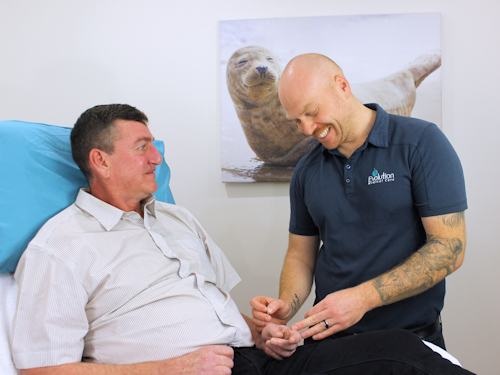
1. If You’re Looking for a Holistic Approach
- Acupuncture may be the better option if you want to address multiple aspects of your health, such as pain, stress, digestion, sleep, or hormonal balance.
- It is designed to support the body’s natural healing processes, rather than just focusing on local pain relief.
- Acupuncture sessions often include lifestyle advice, herbal supplements, and complementary therapies such as cupping and remedial massage techniques to enhance long-term wellness.
2. If You Have Localised Muscle Pain, Sports Injuries or Recovering from Surgery
- Dry Needling may be helpful for specific musculoskeletal conditions, such as muscle knots, tension headaches, or sports-related injuries.
- Dry Needling is commonly used in physiotherapy and rehabilitation to relieve pain while also supporting the patient’s return to functional movement and activity following injury
3. When Pain Comes with Stress or Sleeplessness
- Acupuncture treatments are typically longer and designed to engage the parasympathetic nervous system, promoting deep relaxation and stress relief.
- Sessions are intended to be calming, often resulting in improved sleep, mood, and overall mental clarity following treatment.
- Acupuncture is especially valuable when emotional wellbeing, burnout, or chronic stress are part of the clinical picture.
4. Why Not Try a Combination Approach?
Some patients benefit from both techniques. For example, Acupuncture can help regulate nervous system function, while Dry Needling can release tight muscle knots. A qualified Acupuncturist can incorporate both methods safely within a holistic treatment plan. Regardless of which option you choose, it is essential to seek a qualified practitioner who understands your condition and can tailor treatment to your needs.
Conclusion
While Acupuncture and Dry Needling may appear similar at first glance, they are fundamentally different in their approach, application, and therapeutic benefits. Acupuncture is a therapy refined over centuries within Traditional Chinese Medicine, designed to support the body’s natural healing processes and promote lasting health across both physical and emotional levels. Dry Needling, on the other hand, is a more recent adaptation, focusing specifically on muscle dysfunction and localised pain relief.
It’s worth noting that qualified Acupuncturists are trained in trigger point techniques similar to Dry Needling, while those offering Dry Needling are not trained in the broader diagnostic or clinical methods of Acupuncture.
When choosing between the two, it’s helpful to consider your overall health goals, the nature of your condition, and the depth of care you’re seeking. For ongoing or complex concerns, Acupuncture may offer more comprehensive, holistic health support, while Dry Needling can be an effective tool for short-term muscular relief.
At Evolution Medical Care, our practitioners are experienced in both traditional and modern needling techniques. We’re here to help you find the most appropriate treatment path, tailored to your individual needs.

